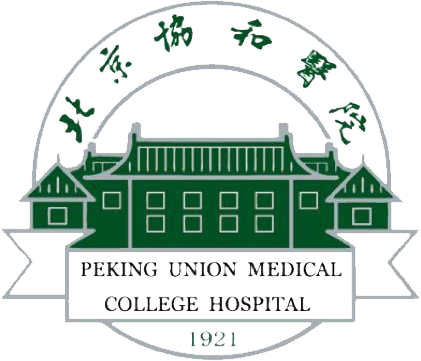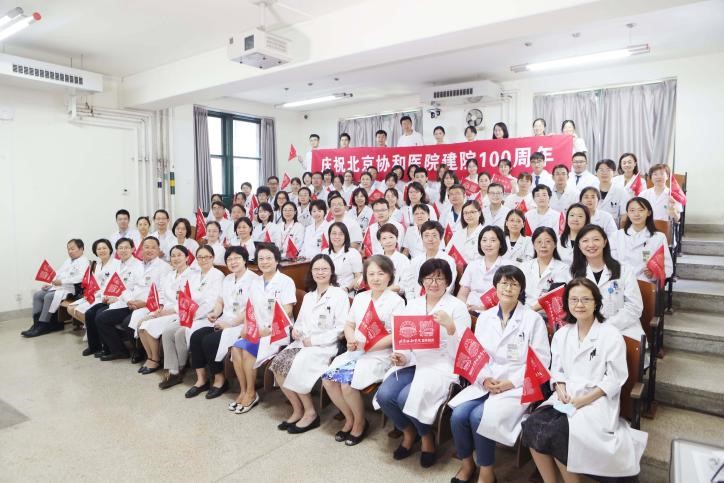
Founded in 1921, the Department of Neurology of PUMCH was the first neurology department in China, and it is behind almost all of the earliest classical cases of neurological diseases in China. After a century’s development, the Department of Neurology has now become a national key clinical specialty, a key discipline in Beijing, a national standardized training base for residents and a postdoctoral mobile station. The department has 8 clinical subspecialties: neurophysiology and ALS, cerebrovascular disease, movement disorders, encephalitis and infection, dementia, epilepsy, demyelinating disease and muscular disease. In 2021, outpatient visits of the department numbered close to 120,000, discharges 3,000, and the percentage of difficult and critical cases as high as 86.2%. The department is equipped with 5 specialized laboratories for EEG, EMG, TCD, neuroimmunology, and neuropathology. With only 69 beds, the Department of Neurology is capable of much more than its size suggests and has topped Fudan’s China Hospital Specialty Ranking for 7 years. The “small but strong” high-quality development strategy that the Department of Neurology practices is a reflection of PUMCH’s distinctive specialty development model that aspires to “treat diseases that others can’t”.
Here, rare diseases become “common”
PUMCH is the only leading unit at the national level for the National Rare Disease Diagnosis and Treatment Collaborative Network. PUMCH’s MDT model that taps into its outstanding cluster of disciplines instills confidence in many of its departments that are small in size, including the Department of Neurology. Making use of PUMCH’s multidisciplinary strength is necessary for departments seeking high-quality development. Thanks to this, rare diseases have now become “common” at the Department of Neurology.
The department was the first to introduce single-fiber electromyography in China, and participated in the compilation of the single-fiber EMG guidelines endorsed by the International Federation of Clinical Neurophysiology; introduced neuromuscular ultrasound into the electromyography department, and achieved the same level of expertise in it as the internationally authoritative EMG and neuromuscular disease centers. Professor Cui Liying was invited to participate in the formulation of the 2021 edition of the international diagnostic guidelines for amyotrophic lateral sclerosis (ALS), and the achievements of the Department of Neurology, PUMCH in the electrophysiological research of ALS have been highly recognized by peers at home and abroad.
In recent years, the department has devoted itself to the research on the imaging, standardized imaging diagnosis, cognitive and motor function of cerebral small vessel disease (CSVD), and research on the etiology and pathogenesis of specific types of CSVD. Prof. Peng Bin led the “clinical cohort study of CSVD”, a “13th Five-Year Plan” precision medicine research project, which enabled the collection and management of multicenter clinical data and biological samples. Prof. Zhu Yicheng led the Shunyi community cohort, from which she obtained accurate data on the prevalence and distribution of cerebrovascular disease in the Chinese community.
Over the years, the laboratory under the Department of Neurology has continuously introduced, researched and carried out novel anti-neuronal antibody tests, maintaining its leading position in immunological diagnosis of autoimmune encephalitis and paraneoplastic neurological syndrome in China. The Department of Neurology initiated a collaborative multicenter encephalitis study, and the antibody-related encephalitis cases and case series that were first reported by it involved more than ten antibodies.
“I hope that we can build our department into a center for the diagnosis and treatment of difficult and rare diseases of the nervous system that leads relevant innovative research in China and ultimately influences clinical decision-making,” said Zhu Yicheng in a firm tone when talking about the planning for the Department of Neurology.
Here, the young become backbone talents
Grand rounds have been a long-standing tradition at the Department of Neurology. Every Thursday afternoon at Room 223 on the tenth floor, well-respected experts would gather for the grand round, even including senior professors like Guo Yupu, Li Shunwei and Yang Yinchang, who always inquire and examine patients patiently and meticulously, regardless of the circumstances.
Started in 2005, the resident case presentation of the Department of Neurology has been held for 16 years. As an innovative year-end assessment for residents, it is designed to be a stage for young physicians to demonstrate their clinical thinking and has become a mature method of clinical competence evaluation.
To standardize the training of young physicians and enhance the sense of belonging and cohesion in the department, the Department of Neurology has implemented a series of training programs, including the three-year rotation system, conversation with first-year residents, and critical reading and review of papers. In addition, the Department of Neurology has shouldered the responsibility of training specialists for the whole country. Over the past three years, it has trained 243 physicians seeking clinical or technical improvement from more than 24 provinces and municipalities, established long-term mentoring and cooperation with primary care providers, and opened over 10 classes with nearly 100 sessions and hundreds of thousands of attendances.
“PUMCH represents a culture: no matter how noisy and rowdy the outside world is, doctors of PUMCH must remain unperturbed and stay focused on honing their clinical skills and techniques with the sole purpose of providing better care to patients. The training and education that residents receive and the clinical work they do at this stage determine whether they will grow into backbone talents in the future, like seedlings growing into tall trees.”
Here, clinical research and diagnostic tool reinforce each other
Over the past five years, the Department of Neurology has led the development of 16 national diagnosis and treatment standards in such fields as neurocritical, cerebrovascular and neuromuscular diseases, neuroimmunology and neurodegeneration, and led a number of multicenter clinical studies related to rare diseases.
The Department of Neurology highly values translating the research outcomes derived from its leading academic performance over a long span. Together with the Institute of Software, Chinese Academy of Sciences, the department is the first in China to establish a quantitative neurological function assessment hardware and software platform, which assists in the diagnosis of neurological diseases through multimodal and natural human-computer interaction.
The tool mainly consists of seven subsystems, namely, cognitive, motor function for handwriting, gait function and voice function examination, intelligent building block examination, intelligent cutlery use examination and detection of abnormal daily use of cell phone. Through multi-modal interaction technology that interacts with users’ writing strokes and gait, smart physical objects, voice, and touch-screen mobile devices, among others, the tools provide key technological support for early warning and screening, clinical diagnosis, prognosis assessment, rehabilitation monitoring and long-range tracking.
Zhu Yicheng pointed out that current clinical evaluation of patients’ neurological function is highly dependent on physicians’ empirical judgment, however, given the complexity and difficulty of describing neurological function due to the unique features of the nervous system, the traditional method is incapable of whole-process data storage and quantitative analysis of the key elements of testing and is heavily influenced by physicians’ subjective judgment. The multi-modal and natural human-computer interaction tool that assists in the diagnosis of neurological diseases utilizes natural human-computer interaction to collect patient and doctor information, which can inform the diagnosis and treatment process and possibly change the diagnosis and treatment mode. “Primary hospitals can leverage this system to assist in diagnosis, which makes up for the lack of specialist training and experience of primary medical professionals.”
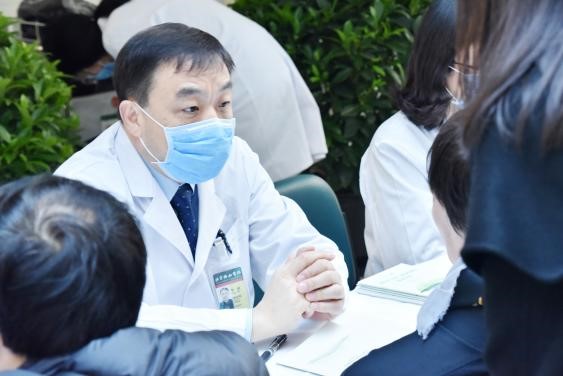
Vice President Peng Bin was providing free consultation
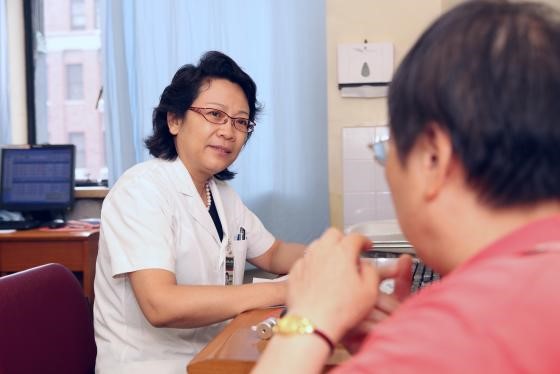
Director Cui Liying was receiving a patient
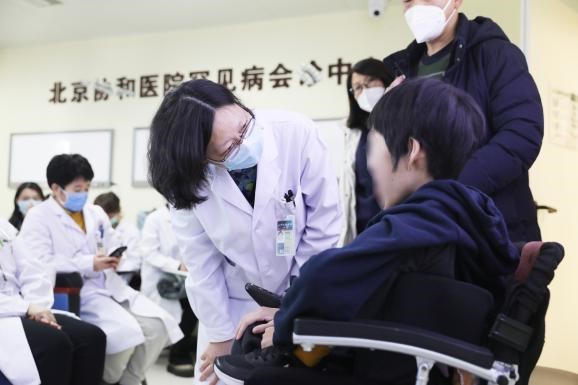
Director Zhu Yicheng was examining a patient
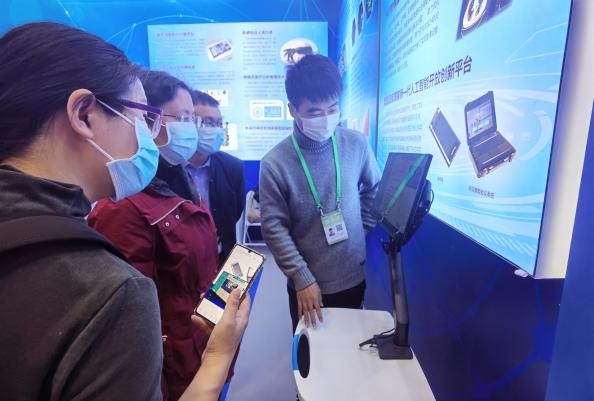
Innovative research outcomes of the Department of Neurology were displayed in the Exhibition of China’s Scientific and Technological Innovations during the 13th Five-Year Plan Period
Written by: Chen Xiao
Picture courtesy: The Department of Neurology and the Department of Publicity
Translator: Liu Haiyan
Editor: Yang Xunzhe and Wang Yao
